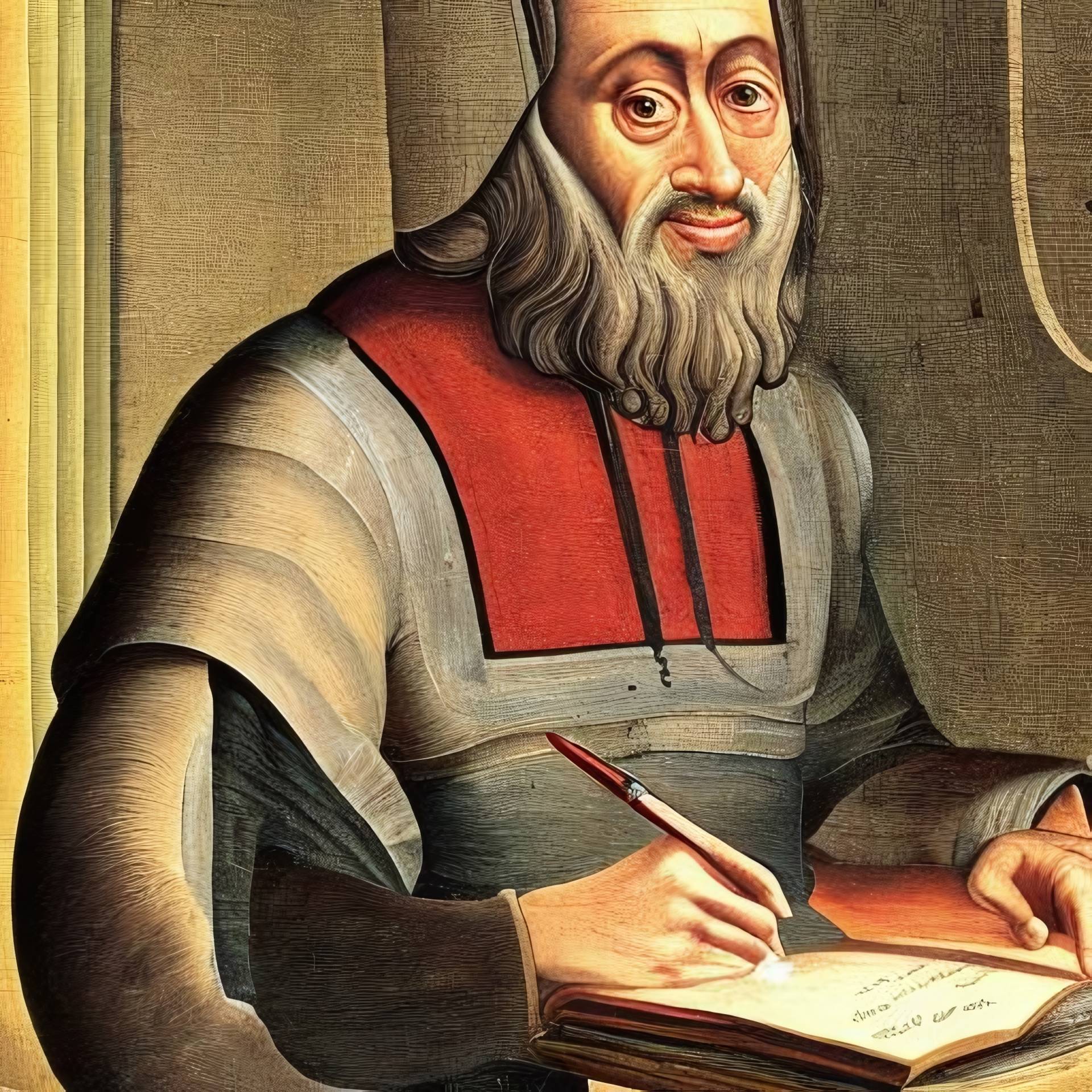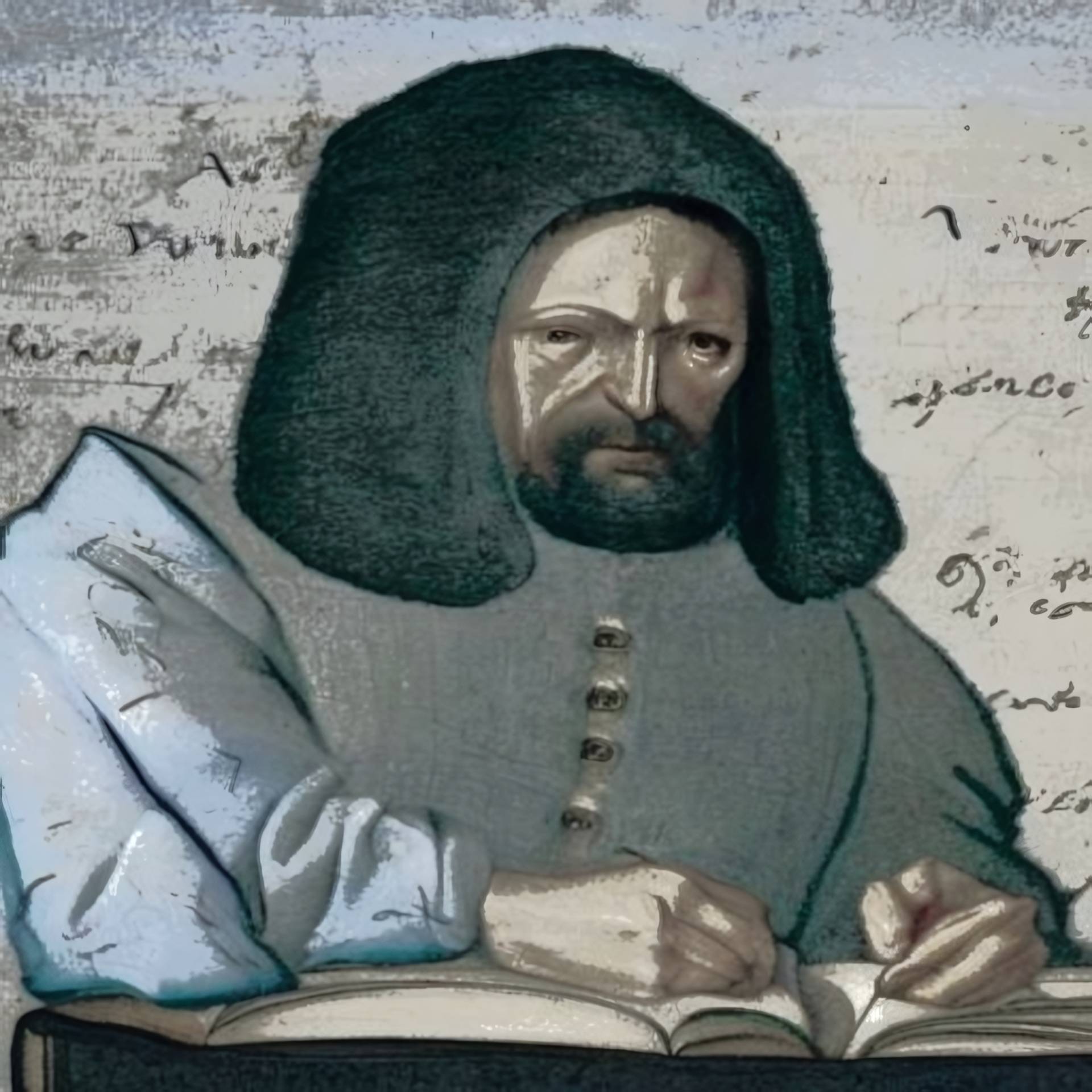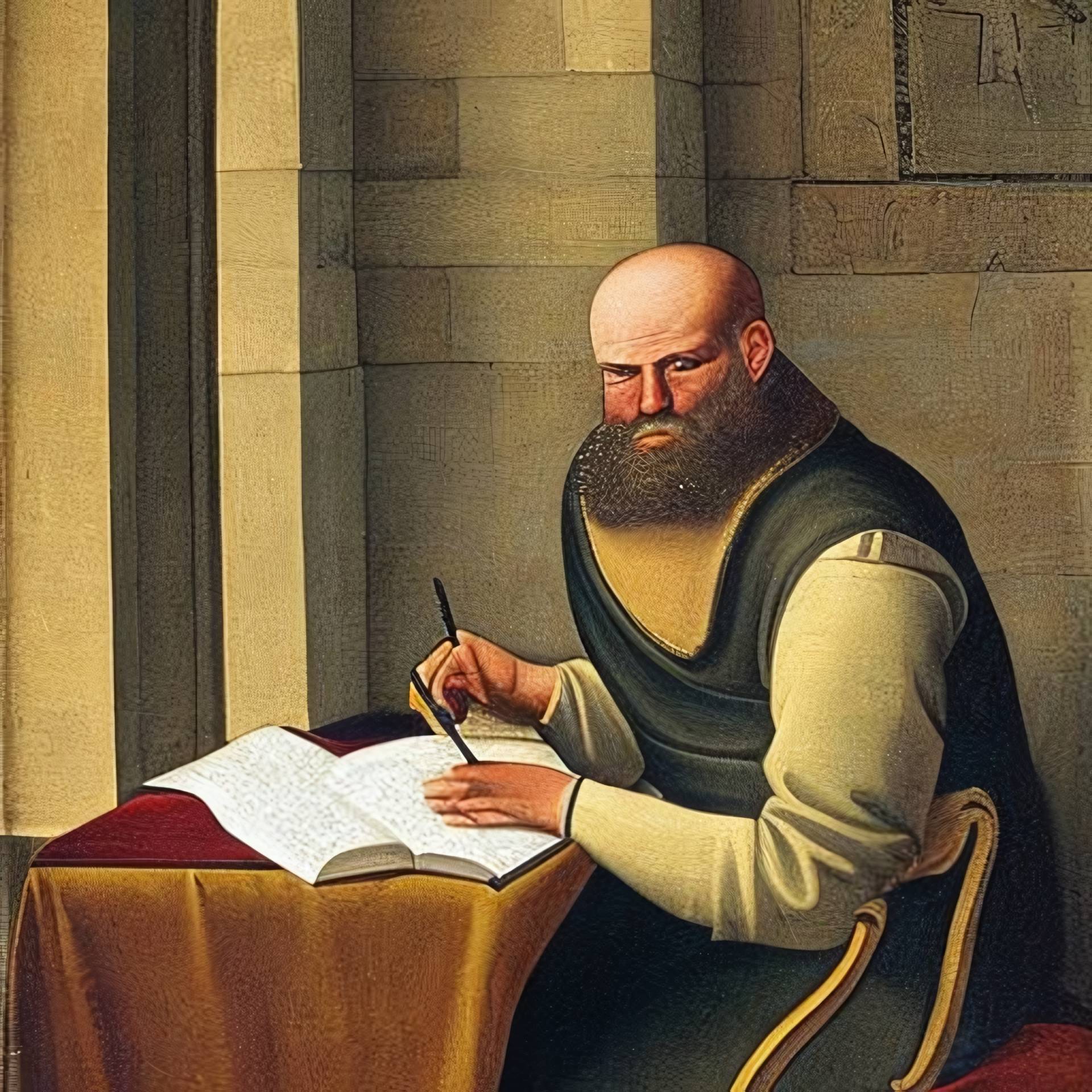Andreas Vesalius (1514-1564) was a Flemish physician and anatomist who revolutionized the study of human anatomy with his monumental work, De Humani Corporis Fabrica Libri Septem (On the Fabric of the Human Body in Seven Books), published in 1543. The Fabrica, as it is commonly known, was not only a scientific breakthrough, but also a masterpiece of art and printing, combining Vesalius’s meticulous observations and descriptions with stunning illustrations and elegant typography.
The Life and Career of Vesalius
Vesalius was born in Brussels, then part of the Habsburg Netherlands, into a family of physicians and pharmacists. He studied medicine at the University of Paris and later at the University of Padua, where he became a professor of surgery and anatomy in 1537. He soon gained fame and reputation for his public dissections of human cadavers, which he performed himself instead of delegating them to a barber surgeon, as was the common practice at the time. He also challenged the authority of Galen, the ancient Greek physician whose writings had dominated medical knowledge for centuries, by pointing out errors and discrepancies between Galen’s descriptions and his own observations.
Vesalius’s ambition was to produce a comprehensive and accurate account of human anatomy, based on his own dissections and experiments. He travelled extensively throughout Europe, collecting specimens and information from various sources, such as hospitals, cemeteries, battlefields, and even executions. He also collaborated with artists, engravers, printers, and patrons to create his magnum opus, the Fabrica.
The Structure and Content of the Fabrica
The Fabrica consists of seven books, each devoted to a different aspect of human anatomy. The first book deals with bones and cartilages; the second with ligaments and muscles; the third with veins and arteries; the fourth with nerves; the fifth with organs of nutrition and generation; the sixth with the heart and lungs; and the seventh with the brain and sensory organs. Each book contains detailed descriptions of the structures and functions of each part of the body, accompanied by references to Galen’s works and other classical sources, as well as Vesalius’s own corrections and additions.
The most remarkable feature of the Fabrica is its illustrations, which are widely regarded as some of the finest examples of anatomical art ever produced. The illustrations were made by artists from the studio of Titian, a famous Venetian painter who was also a friend and patron of Vesalius. The artists followed Vesalius’s instructions and sketches closely, depicting human bodies in various poses and perspectives, often in allegorical or symbolic settings. The illustrations were then engraved on wood blocks by skilled craftsmen, who reproduced every detail with remarkable precision and clarity.
The Fabrica was printed by Joannes Oporinus, a renowned printer from Basel, Switzerland. Oporinus used high-quality paper and ink, as well as sophisticated techniques such as foliation, pagination, signatures, catchwords, running titles, marginal notes, cross-references, indexes, tables of contents, errata lists, colophons, dedications, prefaces and introductions.
The Impact and Legacy of the Fabrica
The Fabrica was an instant success and a sensation in the medical world. It was praised by many of Vesalius’s colleagues and students, who admired his anatomical expertise and his courage to challenge Galen’s authority. It was also criticized by some of his rivals and opponents, who accused him of misinterpreting Galen or distorting the truth. Vesalius defended his work in a series of letters and pamphlets, and also published a revised edition of the Fabrica in 1555, with corrections and additions.
The Fabrica had a lasting impact on the development of anatomy and medicine, as well as on art and printing. It established Vesalius as the founder of modern anatomy and inspired generations of anatomists to follow his example of direct observation and experimentation. It also provided artists and sculptors with accurate and realistic models of the human body, influencing the style and technique of Renaissance art. Moreover, it demonstrated the potential of printing as a medium for disseminating scientific knowledge and artistic expression, setting new standards for quality and elegance.
The Fabrica is widely regarded as one of the most important and influential books in the history of science and medicine, as well as one of the most beautiful and impressive books ever printed. It is a testament to Vesalius’s genius and vision, as well as to the collaboration and innovation of his artistic and technical partners. It is a masterpiece that transcends its time and place, continuing to fascinate and inspire us today.
References
– Garrison DH. Andreas Vesalius: The Making, The Madman, And The Myth. Persona Publishing; 2009.
– O’Malley CD. Andreas Vesalius Of Brussels 1514-1564. University Of California Press; 1964.
– Saunders JB de CM, O’Malley CD. The Illustrations From The Works Of Andreas Vesalius Of Brussels. Dover Publications; 1973.
– Vesalius A. De Humani Corporis Fabrica Libri Septem [On The Fabric Of The Human Body In Seven Books]. Oporinus; 1543.
De Humani Corporis Fabrica Libri Septem
– Wikipedia. https://en.wikipedia.org/wiki/De_humani_corporis_fabrica_libri_septem
– Andreas Vesalius and his De humani corporis Fabrica libri septem. https://pubmed.ncbi.nlm.nih.gov/25181775/
– Artistic Influences on Andreas Vesalius’s ‘De humani corporis fabrica …. https://sharonlacey.wordpress.com/2012/05/31/artistic-influences-on-andreas-vesaliuss-de-humani-corporis-fabrica-libri-septem-and-its-influence-on-the-arts-in-the-sixteenth-and-seventeenth-centuries/
– Calvo G. The Influence Of Vesalius’ Fabrica On Surgery In The 16th & 17th Centuries [Internet]. PubMed Central (PMC). 2017 [cited 2023 Jun 1]. Available from: https://pubmed.ncbi.nlm.nih.gov/29283524/
– Hast MH. Vesalius’ Fabrica As The Foundation For Modern Medical Science [Internet]. Vesaliusfabrica.com. [cited 2023 Jun 1]. Available from: https://www.vesaliusfabrica.com/en/original-fabrica/impact.html
– Lacey S. Artistic Influences On Andreas Vesalius’s ‘De Humani Corporis Fabrica Libri Septem’ And Its Influence On The Arts In The Sixteenth And Seventeenth Centuries [Internet]. Sharonlacey.wordpress.com. 2012 [cited 2023 Jun 1]. Available from: https://sharonlacey.wordpress.com/2012/05/31/artistic-influences-on-andreas-vesaliuss-de-humani-corporis-fabrica-libri-septem-and-its-influence-on-the-arts-in-the-sixteenth-and-seventeenth-centuries/
– Washington University School Of Medicine In St Louis. Vesalius’ Impact And Success [Internet]. Beckerexhibits.wustl.edu. [cited 2023 Jun 1]. Available from: http://beckerexhibits.wustl.edu/vesalius/impact.html
– Andreas Vesalius | Biography, Education, Accomplishments, & Facts. https://www.britannica.com/biography/Andreas-Vesalius.
Tags
Divi Meetup 2019, San Francisco
Related Articles
Unappreciated Greatness
Life and Legacy of Jahangir of the Mughal Empire. Jahangir ruled over one of the largest empires in human history during his lifetime, yet few people outside of South Asia have heard of him. I aim to shed light on the life and legacy of this remarkable figure,...
The Plague Doctor’s Diary
A Personal Account of the Turin Epidemic of 1656. I am writing this diary to record my experiences and observations as a plague doctor in Turin, the capital of the Duchy of Savoy, during the terrible epidemic that has afflicted this city and its surroundings since the...
The Timeless Beauty of Bustan
Unveiling the Secrets of Saadi Shirazi's Masterpiece.In the realm of Persian literature, few works have captured the essence of love, spirituality, and morality quite like Bustan (The Orchard) by Saadi Shirazi. This 13th-century masterpiece has left a lasting impact...
Stay Up to Date With The Latest News & Updates
Explore
Browse your topics of interest using our keyword list.
Join Our Newsletter
Sign-up to get an overview of our recent articles handpicked by our editors.
Follow Us
Follow our social media accounts to get instant notifications about our newly published articles.









